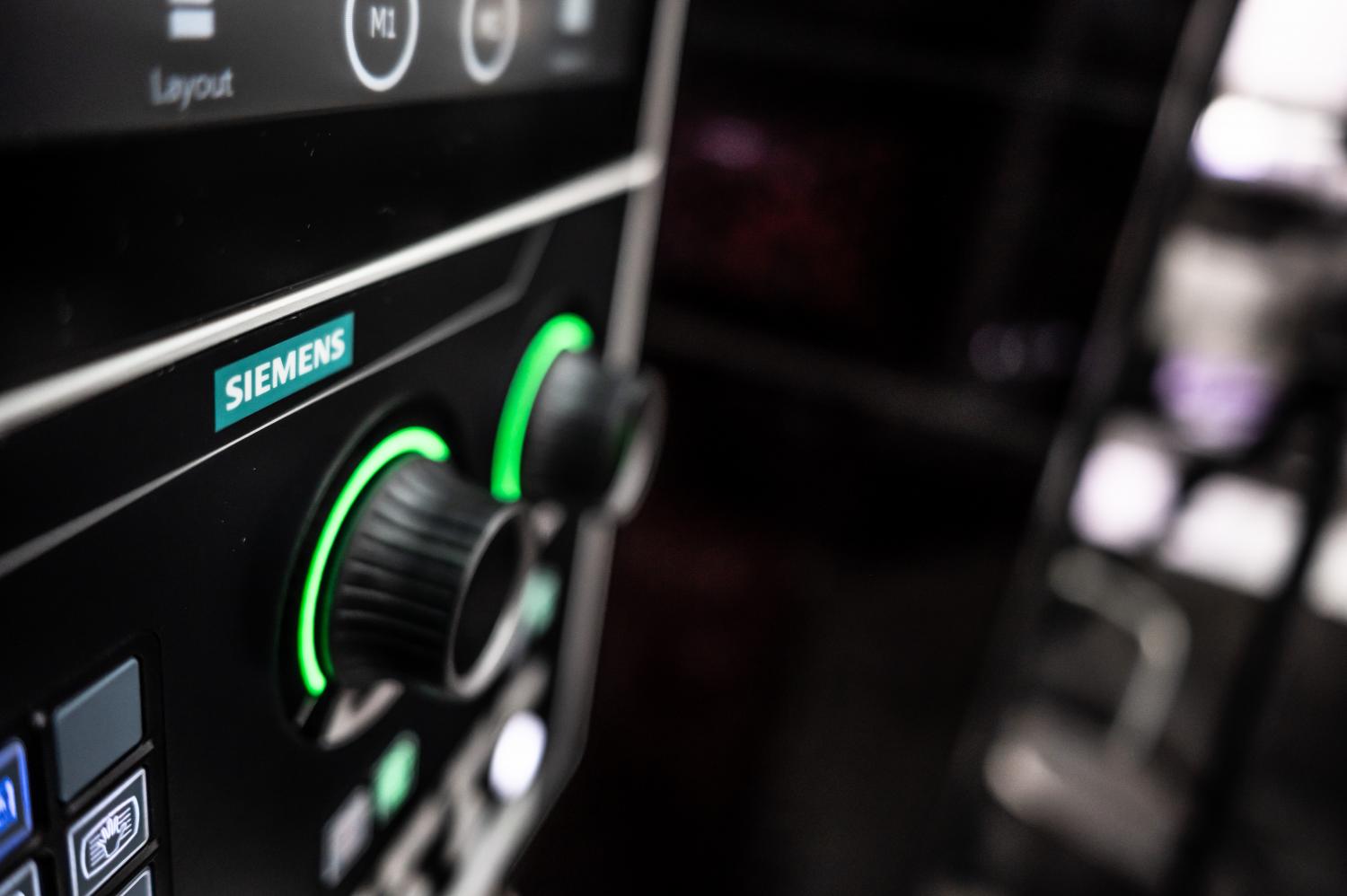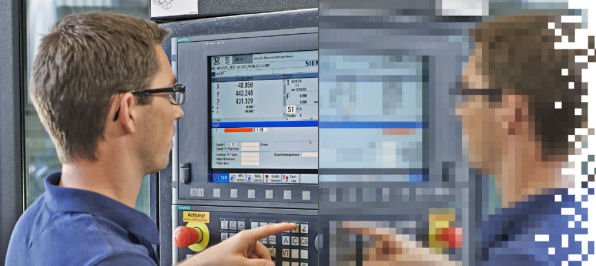Digital Industries, Motion Control, Machine Tool Systems
Making the dream of a digital twin come true

Conversations between CAD/CAM experts and CNC professionals may sound confusing to outsiders. Recently, many companies have been talking about wanting “digital twins,” for example. But what is a digital twin, exactly? And what do you do with it?
Digital twin
The increasing customization of products and ever-shorter product lifecycles are posing new challenges for CNC contractors: competition and cost pressures are growing and, as a result, the production process has to become more and more efficient. On top of that, machines are at their most productive when their tools are at work. In other words, nonproductive time needs to be decreased and as many tasks as possible have to be shifted away from the machines and into production planning. This is exactly what companies hope to achieve by digitalizing the machining process. The first important step toward digitalization is using a CAD/CAM CNC process chain. This allows programming, simulation, and setup procedures to be performed offline as part of production planning.
A perfectly matched pair to facilitate the machining process
The more integrated and complete the CAD/CAM CNC process chain is, and the more realistic its digital map, the greater the gain in productivity for the company. A digital map of the production process is also referred to as a “digital twin” – because the real and the digitalized process should be as similar as possible. By combining the NX CAD/CAM system and the SINUMERIK CNC system, Siemens already offers a digital twin for the entire machining process.
Integrated CAD/CAM CNC process chain
Computer-aided design (CAD) is a computer-supported design and development process. The product is created on-screen down to the last accurate detail. While CAD used to be similar to technical drawing, modern systems such as NX-CAD have developed into complex expert systems. For example, a finite element analysis or flow and heat-transfer analysis can be conducted in the very early phases of development. However, CAD also has a role to play in CNC production planning: Here, the focus is not on making constructive changes to the CAD data provided, but rather on analyzing and – where applicable – adding to the CAD data for CNC production. In CNC production planning, the technician becomes the designer, when it comes to modeling clamping aids, special tools, or more complex blank geometries using CAD. With this in mind, the integration of the CAD and CAM module, as in NX, is a key productivity factor.
Computer-aided manufacturing (CAM) involves using software that is independent of the CNC machine tool to create the NC code. Unlike workshop-oriented programming (WOP), NC programs are created during production planning. A CAM system’s main task is to transform CAD data into tool paths. As such, the integration of the CAM system and the CNC control is a major advantage. For example, when machining free-form surfaces it is extremely important for the CAM system to accurately parameterize the CNC’s speed. NX and SINUMERIK are perfectly matched in this respect: NX provides the Cycle832 high-speed-setting cycle with the required data, which allows the SINUMERIK in the machine to perform at its best.
Increasingly complex machine concepts mean that measures for avoiding collisions are required, ideally during CNC production planning. CAM systems offer simulation modules that ensure process efficiency and reliability in CNC production. The depiction of tool paths can be expanded by integrating tool geometries and blank dimensions for removal simulation. In the case of simulation with virtual machine tools, the tool paths are also displayed on a 3D model of the machine. This enables identification of both collisions between the tool and the workpiece and collisions between the tool and the machine or clamping aids. The virtual machine in NX-CAM significantly increases process reliability. While traditional CAM systems simply supply the simulation with neutral – CNC-independent – tool paths, NX-CAM uses the CNC parts program translated by the postprocessor as an input value. This means that NX includes the impact of the CNC in the simulation result. The outcome is a more precise process image than offered by traditional CAM systems – and therefore greater process reliability.
Perfect simulation with SINUMERIK VNCK
A technical prerequisite for the virtually complete simulation of the CNC program is for the CNC kernel to be recreated in the CAD/CAM computer. This includes typical functions such as a CNC interpreter and CNC interpolator and the calculation of kinematic transformations: for example, a five-axis milling machine. With the Common Simulation Engine, NX-CAM has a universal CNC emulator that can very accurately recreate the CNCs of different manufacturers.
The interplay with SINUMERIK, however, is especially precise since NX-CAM offers the SINUMERIK virtual NC kernel (VNCK) specifically for this CNC. As this VNCK is identical to the SINUMERIK in the target machine, the process image of the simulation comes very close to that of real-life machining. Because of this, the SINUMERIK VNCK is frequently used as a tool in CNC production planning, particularly in the case of complex machinery and expensive workpieces. Another benefit of this integration: The simulated program runtime of the SINUMERIK VNCK is virtually identical to the program runtime in the machine. This allows users to calculate unit costs extremely reliably during the quotation phase, based on simulation. Thanks to the SINUMERIK VNCK’s fully fledged SINUMERIK Operate interface, the run-in of the CNC program on the machine can even be verified on the PC. Experience shows that this facilitates the shortening of setup time for new parts by up to 20 percent.
The VNCK application benefits both large-scale producers and manufacturers of long-term components such as complex molds, because production costs can be identified transparently up front and nonproductive machine times can be avoided. However, machine builders will only reap the maximum benefits if they consistently integrate the VNCK application into their production process.
A digital twin with prospects
In addition to greater process reliability and process efficiency, the combination of NX and SINUMERIK offers even more advantages: The process chain comes from a single source and is perfectly harmonized, thereby minimizing the effort for interface adjustment and software updates. A firmly established complete solution from a single provider such as NX plus SINUMERIK, also provides more reliability in staff and resource planning. In contrast, a CAD/CAM CNC process chain made up of software modules from different manufacturers generates additional costs in the form of interface adaptations and pending software updates due to incompatibility, for example. Moreover, combining the software modules of different manufacturers always requires the work of specialists. Today, when skilled workers are scarce or in the event of staff changes, this can quickly result in bottlenecks in production.
With SINUMERIK and NX, Siemens is currently the only provider on the market offering both CNC technology and a CAD/CAM system from a single source. The extremely broad market position of both subsystems ensures a high level of investment security in the CAD/CAM CNC process chain – meaning good future prospects and development opportunities for the digital twin.





